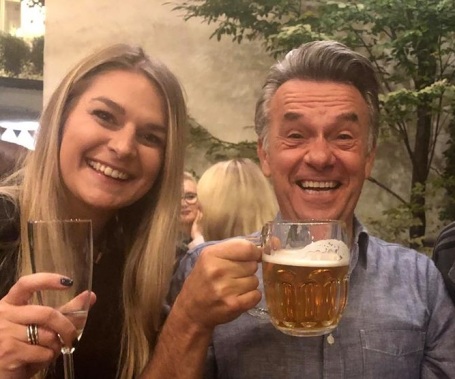
It was a pleasure to appear on Stephen George‘s Good Leaders podcast talking about my fundraising journey and dealing with imposter syndrome! Check it out here!

It was a pleasure to appear on Stephen George‘s Good Leaders podcast talking about my fundraising journey and dealing with imposter syndrome! Check it out here!

Can you remember how it felt the first time you told someone you loved them? Were you excited to take the next big step in the relationship? Relieved to share how you felt? Nervous of what the other person might say? Terrified at the thought of being rejected?
Or was it a mixture of all of the above?
When someone gives money to your cause – whether it is £1 or £1million – they are taking the exhilarating, terrifying leap of saying “I love you”. Your Thank You is your way of saying “I love you” back. No pressure, but how you respond has a huge bearing on whether your relationship with this supporter is going to flourish and bloom or wither and die.
So why do so many charities fluff their lines at this crucial moment?
In return for the supporter sharing their love with the charity, too many charities respond by sending them passionless, self-centred, insincere, automated garbage…if they bother to send them anything at all!
Rather than fan the flames of the relationship, they seem content to stamp out any spark of passion the supporter might have had. Your Thank You should be a love letter to your supporter. At Apollo Fundraising, we’ve put together some tips to make this all-important communication SUPER:
Speedy
After you’ve said “I love you” to someone, how long could you stand to wait before they said something back? What’s the longest you could sit in silence before you started to feel
embarrassed, betrayed and like you’ve made a huge mistake? You want your Thank You to leave your supporter with a warm glow – a strong feeling that they are a good person, that they are valued and respected. The longer the delay, the greater the chance is that, instead of feeling positively about the experience, your supporter will be left with a bad taste in their mouth.
Saying Thank You is really the first time you say “I love you” to your supporter. Don’t make them wait. Your SUPER Thank You should go out as soon as it possibly can – ideally within 24 hours of receiving the gift.
This is not just a case of good manners. There is another reason that you should be racing to get your Thank You out as quickly as possible.
When we make someone feel respected, valued and rewarded we trigger a release of two
neurotransmitters – serotonin and dopamine. As well as making us feel good these chemicals help us to remember pleasurable experiences. However, the longer it takes for the supporter to experience that feeling of being respected, valued and rewarded, the harder it is for the brain to link that feeling to the original action (in this case, making a donation).
Jo Cutler at the Social Decisions Lab at the University of Sussex describes it as being like throwing a ball at a target. If you throw the ball at the target and the target instantly falls over you feel certain that it was your action that causes the target to fall. However, if there is a delay between the ball hitting and the target falling you become less certain of the cause. The longer the gap, the greater the feeling of uncertainty.
The closer in time you can stimulate this surge of happiness to the act of making a donation, the more chance you have of your supporter remembering the donation as a pleasurable experience. And pleasurable experiences are more likely to be repeated.
Unique
As supporters, our rational brain knows that we are not the only person trying to have a
relationship with our chosen organisation. For most of us, it also knows that other people
are giving more and might need more attention.
But our rational brains don’t make donations – our emotional hearts do. And, as far as our emotional hearts are concerned, we are the most important person in the world.
Sending a letter that is clearly mass-produced and mail-merged is unlikely to cut it with an emotional heart that longs to feel valued and significant. After all, if your Thank You looks, feels and sounds generic the chances are it also looks, feels and sounds insincere.
A SUPER Thank You feels unique and personal to your supporter.
This doesn’t necessarily mean writing each new Thank You letter from scratch. But it does mean looking for opportunities to show your supporter that you recognise the relationship you have with them. This could include simple things like the supporter’s name (sounds simple but you’d be amazed how many organisations still send things saying Dear Supporter. Hardly the mark of a love letter!), the size and nature of their gift, what they have given to, what impact it will have, why they’ve given (if you know) and their previous relationship with the organisation. This might also mean thinking about who in your organisation should send the Thank You.
Do they have a personal contact with someone at the organisation? Would they expect to
receive something at a peer-to-peer level?
A simple way to make a Thank You feel unique is by handwriting part – if not all – of the letter. A handwritten salutation and signature will give your Thank You a human touch, whilst a handwritten envelope will help your Thank You stand out from the rest of the post.
SUPER Speedy and Unique
A few years ago I made a donation to SolarAid. I still remember the Thank You they sent and regularly use it as an example.It stood out for two reasons. The first is that it was Speedy. The post mark shows that it was posted within 24 hours of me making the gift. It arrived the next day.
However, the real reason this Thank You was a winner is that it felt Unique. The handwritten envelope makes me feel special – someone took the time to write to me personally. It instantly stood out from the other window envelopes and clearly mail-merged letters I’m used to receiving. And, even though the postcard is clearly mass-produced, the simple handwritten touches make it feel unique to me.
The whole thing probably took a minute to write but the impact on the supporter is significant. In fact, as a result of my experience I now have a monthly direct debit to support SolarAid’s work.
Passionate
The most memorable love letters of all time have one thing in common – none of them started with a feeling of obligation, a standard template and a mail merge.
The act of giving a gift to charity is an act of passion. It’s an emotional act that shows the supporter feels strongly about something. A SUPER Thank You reciprocates this emotion and passion. It recognises the human being behind the gift and helps them to see how the world is a better place because of their act of passion.
It is not purely a receipt or an administrative document. It’s a celebration.
But passion doesn’t just come from the words you say. Actions speak louder than words,
and sometimes it is the seemingly small gestures that have the biggest impact. A SUPER Thank You reflects the fact that the supporter has done something amazing. It shows them that the organisation knows them, and recognises and shares their interests and their passions.
Engaging
While your Thank You marks the end of the supporter’s experience of donating, it is not the end of the relationship.
A bad Thank You is like a Dear John letter – it’s one way, cold and designed to shut down the conversation. You might feel this one-directional approach is suitable for a soon-to-be-ex partner, a soon-to-be-rejected job applicant or a soon-to-be-redundant colleague but it’s not appropriate for someone you are trying to build a relationship with.
A SUPER Thank You is two-way and conversational. It asks questions of the supporter.
After all, there is probably still a lot you don’t know about them. Why did they give to you? What are their passions and interests? What are their turn-ons and turn-offs? It also gives you a chance to find out what type of relationship they are looking for. How involved do they want to be? How do they want to learn about the impact their gift is having? It gives them a chance to shape how they hear from you and the type of involvement they want.
Remember, if you want someone to engage you need to make it easy for them to reply. Ideally, pick a channel that is well-suited to two-way dialogue. For example, what’s stopping you from picking up the phone and thanking a supporter for their gift?
Your Thank You is a love letter, not a Dear John. Rather than shutting the conversation
down, a SUPER Thank You paves the way for the relationship to progress.
SUPER Passionate and Engaging
A few years ago I was working in the office of a small music charity in London. They had just received a four-figure donation completely out of the blue from a first-time supporter. Rather than send a generic Dear John, the fundraiser was smart. She sent a personal email that started a conversation with the supporter.Through this conversation she learned that the supporter had just started learning the piano and was loving it.
Two days later the charity was putting on a concert with an internationally-renowned pianist, performing a new piece for piano. The fundraiser saw an opportunity. They got a copy of the piano music and asked the pianist to write a short thank you note to the supporter. This became the SUPER Thank You.
How’s that for a passionate gesture of love?
Repeated
You might not be able to achieve all of the points above in the same letter. For example, you might not be able to send a passionate Thank You from the supporter’s personal contact in a time frame that would be considered speedy.
That’s OK!
In fact, it could be better than OK because a Thank You shouldn’t just happen once. A SUPER Thank You is repeated, taking different opportunities to thank the supporter and show them the impact their gift has had. For example, there is no reason why someone from the fundraising team can’t send the first passionate Thank You, before their personal contact follows up in a more engaging way.
Sending multiple Thank Yous is not enough by itself to make your supporter remember you. However, it does reduce the risk of your Thank You being missed/ignored/forgotten/lost in the post. Repeated Thank Yous also enable you and your supporter to make a smooth transition from one-time fling to ongoing relationship.
Too busy to be SUPER?
One of the most common reasons I hear from organisations trying to justify sending passionless, generic, forgettable Thank Yous is that they don’t have the time or the money to do better.
I have no time for people who say they have no time to thank their supporters properly.
Here are two reasons why:
The first is that, like you, your supporter also has very limited time. They have their own to- do list to get through and their own throng of friends, family members, companies and charities chirping to get their attention. Yet they have taken time out of their day to show you some love by making a donation. The least you can do in return is to take a few minutes from your day to love them back.
The second reason is that not being thanked properly and not being shown the impact of their gift are two of the top three most common reasons supporters give for not giving a second donation having previously supported. So, if making your supporters feel SUPER is not enough motivation for you to improve your Thank You, perhaps you should try thinking of your PURSE…
To hear more from David, you can find him on twitter here; @davidburgessfr

Us fundraisers can sometimes be guilty of talking about all the wonderful things our charities do, without actually seeing these things in action. I recently attended a weekend event run by my charity where I was able to witness our work in action. It was inspiring, I managed to bring a donor into the fold too (some #donorlove right there) and I felt more connected to our beneficiaries than I ever have before.
After this event, I was able to write more eloquently on our impact, I got real quotes from beneficiaries about how much they enjoyed the event and I genuinely think my fundraising has and will continue to improve as a result.
Get in front of your work. Whether that’s volunteering at an event your organisation is running, going to meet beneficiaries, meeting the programmes staff or just spending a day in a different department at your organisation. Do it. By feeling closer to your work you will instantly improve your storytelling, your messages will be stronger and ultimately your fundraising will benefit.
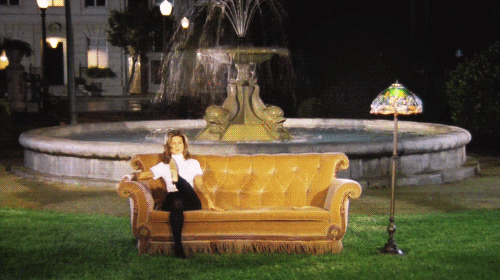
As a millennial, its unsurprising that I am in fact, a huge FRIENDS fan. I’m talking serial offender of saying the lines while watching and still laughing at the jokes that I’ve definitely heard hundreds of times before. I love it and I feel like I will always enjoy re-watching FRIENDS.
In my career as a fundraiser, I like to try and draw analogies between real-life experiences and how I can learn from those in my work as a fundraiser. For example, I’ve written a blog on what buying my first home taught me about fundraising. (Check it out and don’t forget to trust the vision!) I also wrote an article on how fundraising and dating are essentially the same thing.
Therefore, while re-watching the episode ‘the one when where Ross and Rachel were on a break’ and still getting emotional at Ross and Rachel’s break up (no YOU’RE crying), I thought to myself, each of the friends has something to teach us fundraisers. So here we go…
Monica
Ever the perfectionist, Monica has an eye for detail and anything out of place.
What you can learn – re-read your work, ask yourself is this ‘Monica clean?’ Can you beat last-year-you? Just because an appeal was good enough last year doesn’t mean it is good enough now. Try to better yourself and your work.
Joey
With the well-known catch phrase ‘How you doinnnnn’, Joey has a way with his love interests that most of us can only dream of!
What you can learn – See if you can up your donor-love game. Can you treat even more donors like the wonderful people they are? Can you shower them all in donor love? A little bit of appreciation and the occasional delighter moment can vastly improve your fundraising game.
Chandler
Seeing the funny side of things and making people happy with jokes is Chandler’s key characteristic.
What you can learn – Making your donors happy will inevitably be great for your cause. Delight them with what they have made possible but also don’t take yourself too seriously. For example, check out ‘Phil the bag’ and his fundraising appeal!
Phoebe
The wonderfully weird Phoebe! So unique and different to the other Friends but still loved by them all.
What you can learn – Your unique selling point is EXACTLY why your donors love you. You don’t have to do the same number of appeals as another charity, you don’t have to have the same approach as another charity. Your charity is unique and that should be what you use to ensure long standing relationships that are meaningful. Use your uniqueness to your advantage and don’t apologise for being different.
Rachel
Super stylish fashion icon Rachel had the wardrobe I and all my friends wanted. She drove trends and even today people still talk about ‘the Rachel’ haircut. Rachel knew her style, knew how to work it and always stayed on trend.
What you can learn – Keeping up to date with trends in fundraising is a great way to develop your own skills. Attend networking events, find out what is working for others and try them out yourself! If you work for a small charity, you don’t have to be the drivers of innovation in the sector, but you can always keep informed about what is happening in the sector as a whole and move your own charity into new and exciting possibilities.
Ross
Ross loves history, paleontology, and really anything that he considers interesting to teach his friends. He enjoys imparting wisdom and sharing his knowledge.
What you can learn – Historical ways of fundraising are great sounding boards for your current work. For example, learning about community fundraising from the earliest Oxfam fundraisers shows us how wonderful personal relationships have always been for fundraising but also how far we have come in furthering this skill. You can also impart your own wisdom by signing up to a mentoring scheme and teaching a new generation of fundraisers all of the learnings you’ve had in your own career. There really are very few professions quite like that of fundraisers when it comes to sharing knowledge and helping one another.
And on the note of sharing experience and knowledge, if you have a guest blog you would like to submit, please do!

To set the scene, I had a great donor meeting one day and was feeling quite pleased with myself after securing a donation for my charity. A friend messaged me to ask how my day had been and I excitedly replied that it had been great and that I had raised some money. This friend then replied with ‘Whoa what did you have to do to get that donation?’…
My reply… ‘My JOB’.
I am still flabbergasted that there is this implied undertone that as a fundraiser, I couldn’t possibly raise money without resorting to seedy behaviour in order to get results. I couldn’t possibly be trained in making asks or have years of experience behind me. Nope. I must simply relinquish my integrity and only then could I stand any chance of raising money for a charity that does wonderful work.
MASSIVE EYE ROLL.
I refuse to accept that I am being over-sensitive or that I should laugh off such comments. Being a fundraiser is a wonderful job, we enable people to be connected with causes that they care about in a real and significant way. Fundraisers, in my experience, are full of integrity and empathy and are truly wonderful people that want to see the fruits of their efforts impacting the cause that they work so hard for.
Can we please end this implied undertone that fundraising is a dirty word, a necessary evil performed by people with no morals, that will do anything to get a donation. It is simply untrue and the more we call people out on this misconception, the better for everyone in our sector.
Have you ever faced this kind of comment or misconception? How did you handle it?
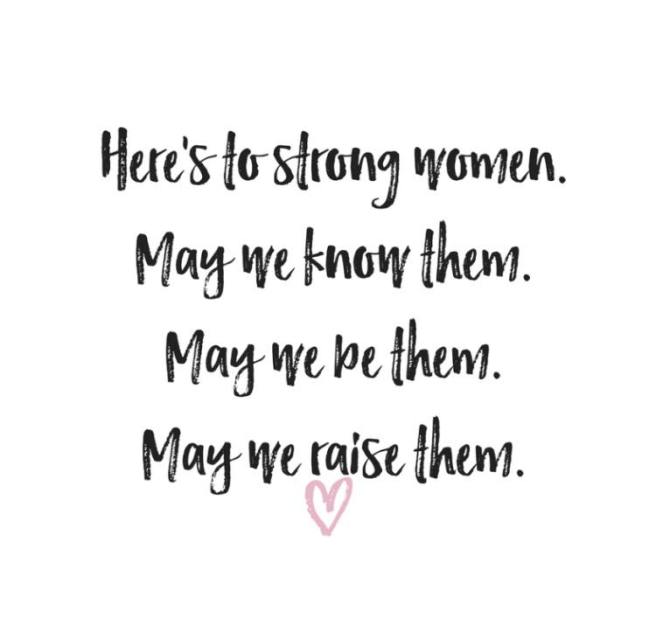
In celebration of #InternationalWomensDay I wanted to share the twitter links to some incredibly inspirational women in the Charity Sector! So, in no particular order…
Don’t forget to follow Charity Women too!
Who are the women that inspire you in fundraising?
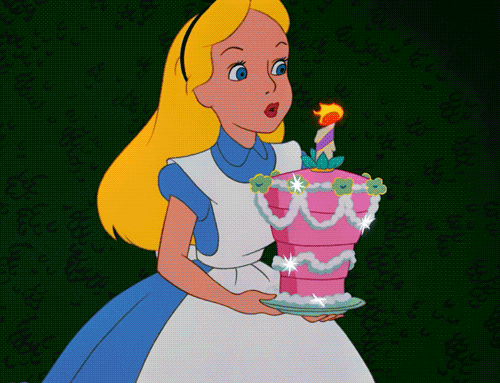
Two years ago, I decided to further my personal development and start blogging about fundraising. Since then, I’ve met so many wonderful fundraisers who’ve encouraged and supported me. Thank you!
I’ve written over 100 articles and had several guest bloggers contribute. It’s so wonderful to see how much this personal project has grown and I am thrilled that you all keep reading my stuff.
Here are your top 5 most-read articles from the last 2 years!
How Thank You letters can make a difference
How close is too close? Keeping it professional with donors
I don’t have time to hand write thank you letters
Why you should be friends with other fundraisers
Have you had a favourite article? Or would you like to write a guest post? Let me know, I’d love to hear from you!
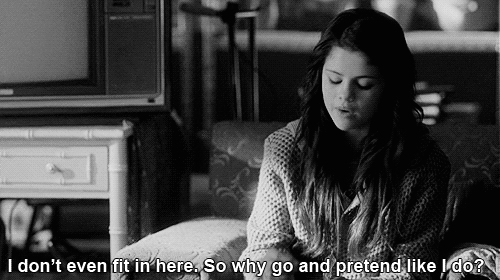
Week after week, as I look through my mother-in-law’s mail box of direct mail, wading through the commercialized, overly-branded, perfectly-typeset in Gotham, full of boasting and praise for itself, “charitable” appeals, I shake my head and think, there’s no room for me here. There’s no room for me, the donor.
I read tweet after tweet about the next big SCORE of a major gift for your new wing at your hospital, with a giant, perfectly-lit photograph of another old white guy, beaming ear to ear holding a big cheque with your major gifts officer, handshakes all around, and I get a crease in my brow and think, there’s no room for me here. There’s no room for me, the donor.
I see website after website, talking about this new campaign, this new problem, this latest thing we totally fixed, or the latest anniversary and celebration, with beautiful stock photos, reversed out type and oh! hey! look! a tiny “donate” button… ruining another otherwise gorgeous wordpress template, and you know, I stretch my hand off my mouse and I think, there’s no room for me here. There’s no room for me, the donor.
I wonder what your donor did to make parts of your team loathe them so much. I wonder why I never hear about a fundraiser getting to approve all the “churn” that comes out of the marketing department. I wonder why people find it so hard to be emotive in their language, and loving in their actions with their donors. I wonder what makes YOU so much more important than THEM?
I look at you and think there’s no room for me here.
And I don’t stop giving.
I just stop giving to you.
And you still don’t accept the blame.

Agent John is a long time marketer, designer and ranter. Agent Jen calls him “authentic”. Others may not be so kind. The truth is, John wears his heart on his sleeve and when provoked will wave his hands and raise his voice an octave as he voices his frustration and opinions. And a blog post may even come of it.
Find him on Twitter @johnlepp
And check out Agents of Good here

So you’ve nailed a wonderful fundraising position in a fantastic org! Amazing! In an ideal world, you’ll be surrounded by other inspirational and driven fundraisers from whom you can garner all kinds of nuggets of fundraising wisdom! But what if you work in a tiny team? Or even in a solo team? Who is there to bounce an idea around with? Who can you turn to to complain about how your colleagues just don’t get fundraising?
Being friends with other fundraisers is one of the most valuable things you can do as a fundraiser. They relate to your struggles and wins in ways your colleagues sometimes just can’t. Fundraisers tread similar paths within their organisations and overcome many of the same obstacles you will face along the way. Having a group of fundraising friends provides a unique support network of like-minded individuals who are more than likely going to be thrilled to spend an evening chatting with you about what’s going on in your fundraising department.
Over the years I’ve met up with fundraisers to discuss how to tackle Trustee relationships, to proof read my latest Direct Mail appeal, to have a moan about that one colleague that seems to have a chip on their shoulder especially just for me. But I’ve also met with them to celebrate their wins, launch their newly founded charities, give them advice on things I have experience in and be the listening ear that they need too.
Fundraisers are some of the most generous people I’ve ever come across, giving up their time to freely offer advice and support to others. So if you’re feeling lost, alone or like you just want to chat to someone who might give you a second opinion on your latest project, ask a fundraiser to meet you for drinks!
I’ve met some of my favourite people through fundraiser socials, connecting on twitter or just chatting at fundraising training days. And they have led to some incredible friendships, opportunities for development and introductions to even more incredible charity folk! (I have several exciting projects happening this year all down to being friends with these fabulous people! Keep your eyes peeled!)
If you don’t know where to start, have a look on facebook for ‘fundraising chat’ the closed group specifically for advice and support for fundraisers, by fundraisers. Then do a search on twitter for #fundraiser on the people section and just start following!
This blog post is a tribute to my fundraiser friends and all of the support, advice and love they have given and continue to give! I couldn’t do what I do without you and I certainly wouldn’t be blogging or speaking at conferences without you! Thank you x
Who are your favourite fundraising friends?